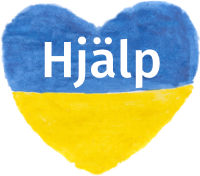Sava
The 45 km long Sava Dolinka starts as the Nadiža creek in the Planica Valley under Zadnja Ponca in the Julian Alps, at the altitude of 1,222 m, near the Italian border. The stream goes underground and after 5 km breaks out again at the height of 842 m in Zelenci, near Kranjska Gora. A notable (left) tributary of it is the Radovna, which flows through a beautiful gorge called Vintgar. The Sava Dolinka flows through the cities of Kranjska Gora, Gozd Martuljek, Jesenice, near Bled and Lesce. The first in a series of hydroelectric plants on the river, the Moste Hydro Power Plant (22.5 MW) is located near Žirovnica.
The shorter, 31 km long Sava Bohinjka originates under the Komarča wall at the altitude of 805 metres (2,641 ft), from underground sources drained from the Triglav Lakes Valley. Until Lake Bohinj, the river is known as the Savica ("little Sava"), and features Savica Falls ("Slap Savica") a 60 m high waterfall at its source.[1] Then the Savica River flows through the Ukanc Gorge, where a 3 MW power plant "Savica" is located. Then it flows into Lake Bohinj, creating a small delta. Afterwards, as Sava Bohinjka, it flows through Bohinjska Bistrica, Bohinjska Bela and close to Lake Bled, before it meets the Sava Dolinka near Radovljica.
From Radovljica till Dolsko to the east of Ljubljana, the Sava flows across the Ljubljana Basin. Then it enters the Central Sava Valley (Zasavje) and the Lower Sava Valley (Posavje).
Geography
The confluence of the Sava into the Danube at Belgrade
The Sava as it flows into Kranj, Slovenia.The Sava drains an area of 95,719 km². The watershed reaches as far south as northern Albania (115 km²). Its average discharge at Zagreb, Croatia, is 255 m³/s, while in Belgrade its amassed to 1,722 m³/s. It also gets very deep, up to 28–30 m near villages of Hrtkovci and Bosut, in Serbia. In Serbia it creates several big river islands, including Podgorička ada near Provo and 2.7 km² Ada Ciganlija in Belgrade, the most popular Belgrade resort. The island has been connected to the right bank of the river with three causeways creating an artificial lake called "Lake Sava" with an area of 0.8 km². It is nicknamed "Belgrade Sea" and it is known to attract up to 350,000 visitors daily in the summer season.
The river has high electricity production potential in its upper course, up to 3.2 (including tributaries 4.7) billion kWh, which has not been used until lately. Apart from already mentioned two power plants, there is a third, on the Sava itself, "Medvode" (17.8 MW), near Ljubljana. There are also several hydroelectric plants under construction, of which "Vrhovo" and "Boštanj" have already begun electricity production.
The river bed is not regulated for the most of its length. That causes floods from time to time, which can affect as much as 5,000 km² of mostly very fertile land (Posavina, Sava Valley). In October 1964 Sava flooded Zagreb almost to the center, causing heavy damage and human casualties, after which high levees were built. In 1981 and April 2006, the Sava flooded lower parts of Belgrade. In 1977 & 1980 both federal and inter-republican agreements were signed about Sava's regulation, which were supposed to regulate its waters to prevent flooding, build new power stations, establish full navigation to Zagreb and ecologically protect its waters, with the final deadline being the year 2000. However, not much was done and Yugoslavia itself broke up in 1991.
East of Ljubljana, the Sava flows through a 90 km long gorge and afterwards the Brežiško - krško polje. As the Pannonian Sea receded, the Sava grew longer and longer, carving the Sava Trench (Savski rov) through which it flows to the east. Together with lower courses of Bosnian rivers which became its tributaries, it created huge floodplains. Becoming wide (at Šabac its 680 m wide, while on its mouth only 280 m), the Sava begins to meander and in history changed course many times, being pushed by the gentle slope of the Pannonian bed to the south and by the force of its many right tributaries to the north. Old riverbeds turned into swamps and ponds known as mrtvaja (dead water) and starača (old water) in Serbian. The best known is one of the biggest ponds in Serbia and one of the biggest wild birds reservation areas in Europe, Obedska bara.
Plats: Bosnien-Hercegovina
Bilden tagen: Juli 2010
